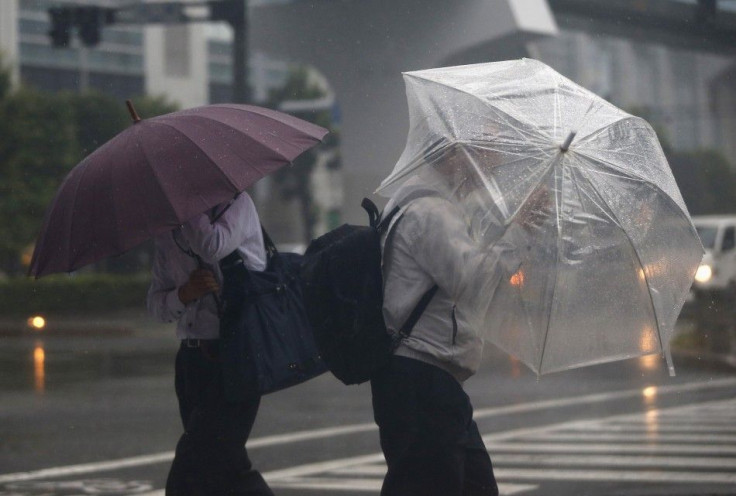Typhoon VongFong 2014 Could Churn Waves As High As 50ft

Super typhoon Vongfong, a category 5 hurricane and so far 2014's strongest, will churn out waves as high as 50 feet once it hits Japan by early next week, the Joint Typhoon Warning Center (JTWC) said.
Currently moving westward over the open waters of the West Pacific, JTWC forecasters said Super typhoon Vongfong had somehow reduced strength on Wednesday morning. Weather experts said they see possible fluctuations in its strength, but nothing would make it shed off its super typhoon title in the next 36 hours.
As of Wednesday morning, its maximum sustained winds hit 165 miles per hour. On Tuesday, it was a whopping 180 miles per hour.
Computer models continue to show super typhoon Vongfong's track still seems to target Japan's Ryukyu Islands, and then northeastward toward the Japanese mainland. Just recently, Japan got dumped by up to two feet of rain courtesy of Typhoon Phanfone. It likewise trashed the country's capital with 70 mile per hour winds.
Read: Category 5 Super Typhoon VongFong Now 2014's Strongest; Eyes Japan
With its soil still very much drenched in water, mudslides along mountain slopes are a very present danger to Japan and its residents with the arrival of Vongfong. U.S. authorities are likewise anxious because Super Typhoon Vongfong could hit and damage one of its military's largest concentrations of manpower and firepower on Kadena and Okinawa islands.
Close up of Super Typhoon #Vongfong's eye via @NASANPP VIIRS. Oct. 8, 2014 at 12:13 am EDT. (Image from RAMMB/CIRA) pic.twitter.com/42ziSs0zrN
— NOAA Satellites (@NOAASatellites) October 8, 2014
Kadena Air Base is home to 24,000 U.S. as well as Japanese military personnel and contractors. Both military installations have started stocking up on food, water supplies and fuel, the NBC News said.
"Satellite loops show Vongfong is an extremely impressive storm, with a large area of heavy thunderstorms with very cold cloud tops, excellent upper-level outflow, and a large 30-mile diameter eye," Dr Jeff Masters of Weather Underground wrote.
Vongfong is 2014's fourth Category 5 storm, and the second in the Western Pacific. Super Typhoon Halong was the other Western Pacific Cat 5 which topped out at 160 mph winds.
Rammasun, another Western Pacific Super Typhoon, was a Cat 4, but it killed 195 people and left more than $7 billion in damage in China's Hainan Island on July 17. From 2000 to 2013, an average of five Category 5 storms has occurred annually. Majority or 51 per cent formed in the Western Pacific.
Awesome comparison of recent powerful #typhoons including #Vongfong which we are tracking now. via: @NOAA pic.twitter.com/NB5FSRvWae
— Bill Karins (@BillKarins) October 8, 2014





















